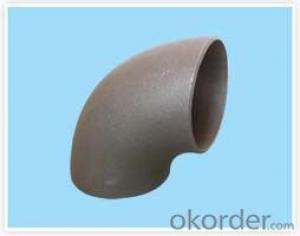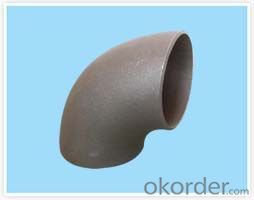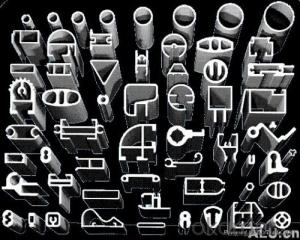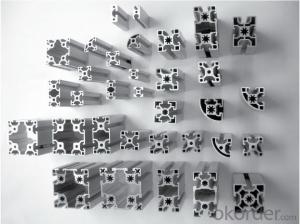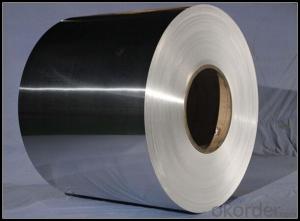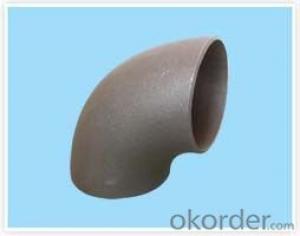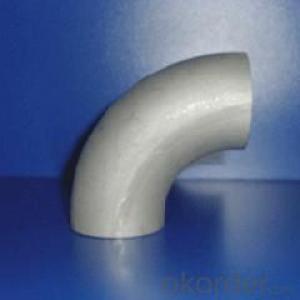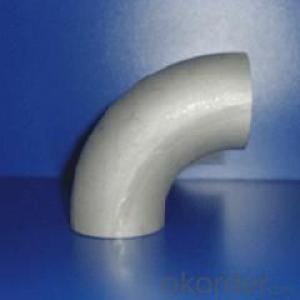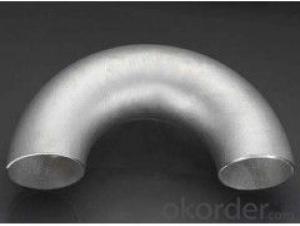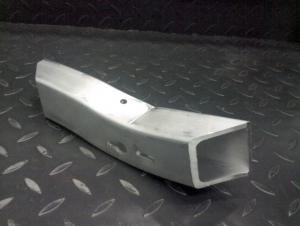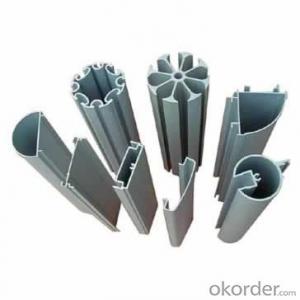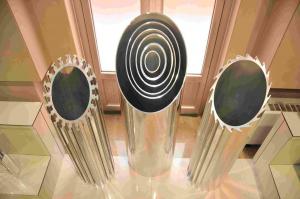Bosch Profiles Aluminum 60 Degree Aluminum Elbow
- Loading Port:
- China Main Port
- Payment Terms:
- TT OR LC
- Min Order Qty:
- -
- Supply Capability:
- -
OKorder Service Pledge
OKorder Financial Service
You Might Also Like
Specifications
60 degree aluminum elbow
1.size:1/2"-48"
2.standard:ASTM B16.9
3.Certification: ISO
Type | 60 degree elbow |
Size | 1/2"-48"DN15--DN1200 |
Wall Thickness | Sch5--Sch160XXS |
Standard | ISO, SNSI, JIS, DIN, GB/T12459GB/T13401ASME B16.9SH3408 SH3409HG/T21635HG/T21631SY/T05010 |
Material | 20#/Q235 |
Packaging | wooden cases or wooden pallet or as per customers requirement |
Applications Range | petroleum, chemical, power, gas, metallurgy, shipbuilding, construction, etc |
Min Order Quantity | According to customer's requirement |
Delivery Time | According to customer's requirement |
Quality | First grade |
Productivity | 8000000T/Y |
Others | 1.Special design available according to requirement 2.Anti-corrosion and high-temperature resistant with black painting 3. All the production process are made under the ISO9001:2008 strictly. |
- Q: What are the various types of connectors that can be used with aluminum profiles?
- <p>Aluminum profiles can be connected using a variety of connectors designed for different applications and structural needs. Common types include: 1. T-slots connectors, which slide into the T-slots of the profiles for secure attachment. 2. Angle connectors, used to join profiles at right angles. 3. Corner brackets, for creating 90-degree corners. 4. Clamping blocks, which hold profiles together without screws. 5. Hinges, allowing for pivoting movements. 6. End caps, to cover the ends of profiles. 7. Cylindrical connectors, for joining round tubes. 8. Linear connectors, for straight-line connections. 9. Specialized connectors for specific applications, such as cable management or mounting brackets. These connectors are crucial for assembling aluminum profile systems in various configurations.</p>
- Q: This question asks about the variety of dimensions and forms that aluminum profiles can come in.
- <p>Aluminum profiles are available in a wide range of sizes and shapes to suit various applications. Common shapes include rectangular, square, circular, and special profiles like angles, channels, and tees. Sizes can vary from thin strips to thick bars, with specific dimensions tailored to the needs of the project. The profiles can be flat, hollow, or have complex cross-sectional geometries. They are also available in different surface finishes, such as anodized, painted, or powder-coated, to enhance their appearance and durability. The selection of aluminum profiles depends on the structural requirements, design specifications, and the industry they are intended for, such as construction, automotive, or aerospace.</p>
- Q: Are aluminum profiles suitable for use in electronics manufacturing?
- Indeed, aluminum profiles prove to be a fitting option for utilization in the field of electronics manufacturing. Aluminum, being a lightweight material, possesses durability and exhibits exceptional thermal conductivity, rendering it an ideal choice for dissipating heat generated by electronic components. Moreover, its high strength-to-weight ratio facilitates the development of robust and lightweight structures, a particularly advantageous characteristic in electronics manufacturing where weight reduction is frequently sought after. Furthermore, aluminum profiles offer versatility in design and customization as they can be easily machined, welded, and shaped into a variety of forms. The corrosion resistance of aluminum further guarantees the longevity and dependability of electronic devices. Consequently, considering the aforementioned properties, aluminum emerges as a suitable material for use in the realm of electronics manufacturing.
- Q: This question asks for guidelines to ensure the proper and safe installation of aluminum profiles.
- <p>To ensure the correct and safe installation of aluminum profiles, follow these steps: 1. Use high-quality aluminum profiles that meet industry standards. 2. Prepare the surface by cleaning and leveling it. 3. Use appropriate tools like drills, screws, and cutting equipment. 4. Follow the manufacturer's guidelines for installation. 5. Ensure proper alignment and spacing of the profiles. 6. Secure the profiles with the right fasteners and adhesives. 7. Check for any sharp edges or protrusions after installation. 8. Regularly inspect and maintain the profiles to prevent any damage or wear. By adhering to these steps, you can ensure a safe and secure installation of aluminum profiles.</p>
- Q: What are the cost considerations for using aluminum profiles?
- Some cost considerations for using aluminum profiles include the initial cost of purchasing the profiles themselves, any additional costs for custom or specialized profiles, the cost of installation and assembly, maintenance costs, and potential future costs for repairs or replacements. Additionally, the cost of aluminum profiles may vary depending on the quality and thickness of the material used.
- Q: This question seeks to understand the various types of aluminum profiles that are specifically used in the construction of building facades.
- <p>Aluminum profiles for facades come in various types, each serving different purposes and functions. Common types include: 1. <strong>Vertical and Horizontal Mullions</strong>: These are the primary structural elements that form the framework of the facade. 2. <strong>Transoms and Muntins</strong>: Used to divide the glass into panels, providing both aesthetic appeal and structural integrity. 3. <strong>Capping Profiles</strong>: These cover the ends of the mullions, providing a finished look and protecting the edges. 4. <strong>Cover Caps</strong>: Used to conceal the fasteners and provide a clean, streamlined appearance. 5. <strong>Angle Connectors</strong>: Facilitate the connection of different profile sections at various angles. 6. <strong>Gaskets and Seals</strong>: Ensure weatherproofing and insulation. 7. <strong>Accessories</strong>: Such as handles, locks, and hinges, which are integrated into the facade system. Each type is designed to meet specific performance requirements, such as load-bearing capacity, resistance to environmental factors, and aesthetic considerations.</p>
- Q: How do aluminum profiles contribute to the reduction of carbon footprint?
- Aluminum profiles contribute to the reduction of carbon footprint primarily through their lightweight nature and recyclability. As aluminum is a lightweight material, it requires less energy to transport and install compared to heavier materials, resulting in lower carbon emissions. Additionally, aluminum profiles are highly recyclable, allowing for the conservation of resources and reduction of energy consumption during the manufacturing process. By choosing aluminum profiles over other materials, carbon emissions can be minimized, contributing to a more sustainable and eco-friendly approach.
- Q: What are the differences between aluminium profiles 6063 and 6463?
- The role of 1.2 Si and the amount of Si that affect all Mg in the alloy can be in the form of Mg2Si phase, to ensure the full play of the role of Mg. With the increase of Si content, the grain of the alloy becomes thinner, the fluidity of the metal increases, the casting performance becomes better, the strengthening effect of heat treatment increases, the tensile strength of the section increases, while the plasticity decreases, and the corrosion resistance becomes worse.6463, construction and various appliances, profiles, and after the anodic oxidation treatment has bright surface of the car trim.
- Q: Can aluminum profiles be used for electrical applications?
- Yes, aluminum profiles can be used for electrical applications. Aluminum is a good conductor of electricity and has excellent thermal conductivity, making it suitable for various electrical applications such as conductors, busbars, heat sinks, and electrical enclosures.
- Q: Can aluminum profiles be used for stage and event structures?
- Yes, aluminum profiles can be used for stage and event structures. Aluminum is a lightweight and durable material that is commonly used in the construction industry for various applications, including stage and event structures. Aluminum profiles are versatile and can be easily shaped, cut, and joined together to create custom structures. They offer excellent strength-to-weight ratio, making them suitable for supporting heavy equipment and ensuring the safety of performers and audience members. Additionally, aluminum profiles can be powder-coated or anodized to provide a decorative finish and protect them from corrosion, enhancing the visual appeal and longevity of the structures. Overall, aluminum profiles are a popular choice for stage and event structures due to their versatility, strength, and aesthetic qualities.
Send your message to us
Bosch Profiles Aluminum 60 Degree Aluminum Elbow
- Loading Port:
- China Main Port
- Payment Terms:
- TT OR LC
- Min Order Qty:
- -
- Supply Capability:
- -
OKorder Service Pledge
OKorder Financial Service
Similar products
Hot products
Hot Searches
Related keywords
